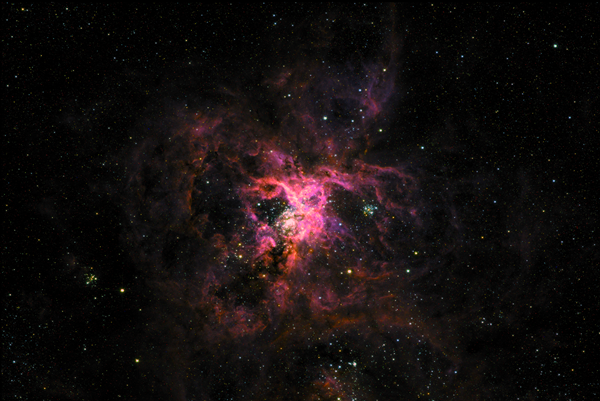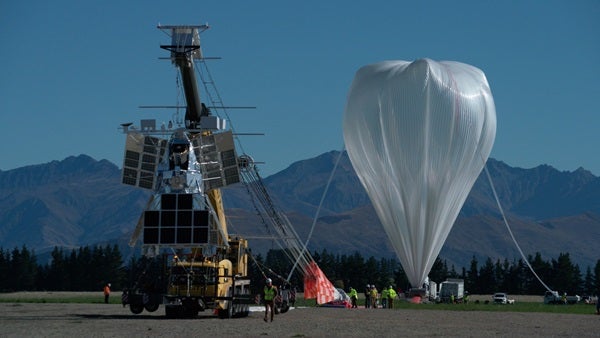
The Super Pressure Balloon-borne Imaging Telescope (SuperBIT) launched from Wānaka, New Zealand, on April 16 and has already captured stunning images of the Tarantula Nebula, kickstarting its 100-day hunt for dark matter.
The helium-filled super pressure balloon, which is about the size of a football stadium, can reach an altitude of about 110,000 feet (21 miles [33.5 kilometers]) above Earth’s surface. The purpose of SuperBIT is to capture near-infrared to near-ultraviolet observations of celestial objects.
SuperBIT will also help astronomers map the dark matter around galaxies by looking at how much space is warped around them, an effect called “gravitational lensing.” It also has a wider field of view compared to other space telescopes.
The Tarantula Nebula, a target of both James Webb and Hubble Space Telescopes in the past, is located about 160,000 light-years away in the Large Magellanic Cloud, a nearby satellite galaxy of the Milky Way. The bright pink sections in this new image of the Tarantula nebula highlight dust that’s forming young stars. Meanwhile, the spots of blue and yellow scattered around the region are older stars.

Floating on
According to the NASA balloon tracking program, SuperBIT is currently located over the ocean near Antarctica. It is expected to travel across the southern hemisphere over the next 100 days or so, relying on atmospheric wind for movement. After it’s mission is over, SuperBIT will fall back to Earth using a parachute — and astronomers plan to use it again in the future.
SuperBIT will spend the majority of its time afloat over water. But if it does get blown by the wind over a land mass, researchers will have coordinate with any countries it may cross. The primary challenge of controlling a massive balloon is managing its altitude, especially as temperatures change from day to night. To combat this, scientists designed the balloon to maintain a balanced internal pressure, which helps SuperBIT maintain a steady altitude.
Balloon-based science is becoming a more common tool in astronomers’ toolkits because of the simple matter of cost. According to a news release from Durham University, another organization working on the SuperBIT project, this mission cost about $5 million, which is about one thousandth the price of a similarly equipped space telescope mission.
“The super pressure balloon technology is a real game-changer for conducting cutting-edge science at the edge of space at a fraction of the cost of flying into space,” said Debbie Fairbrother, NASA’s Balloon Program Office chief, in a NASA release.
The super pressure balloon used for SuperBIT will also launch the Extreme Universe Space Observatory 2 (EUSO-2), created by the University of Chicago, in the near future. That mission will look at ultra-high-energy cosmic-ray particles that come from outside the galaxy but enter Earth’s atmosphere. The mission will build off the first EUSO mission from 2017.









